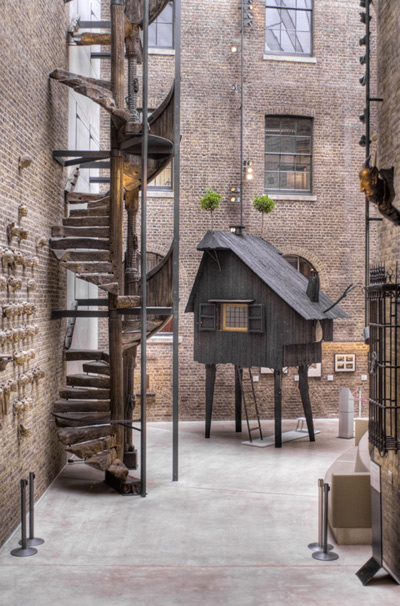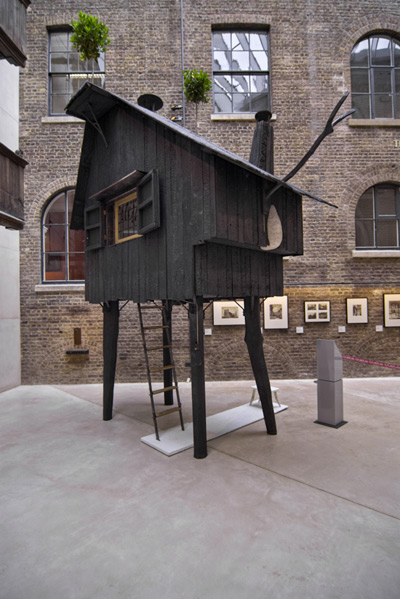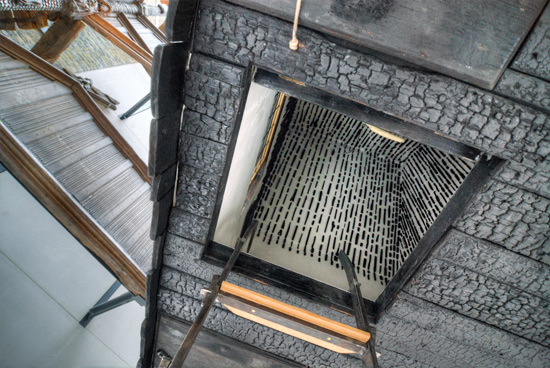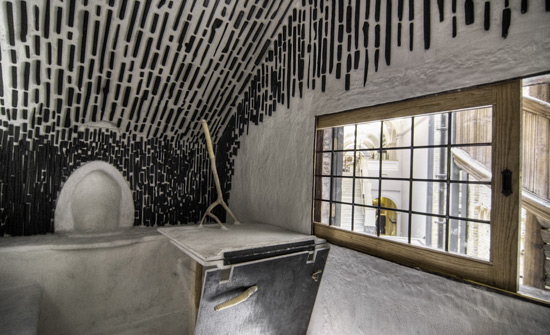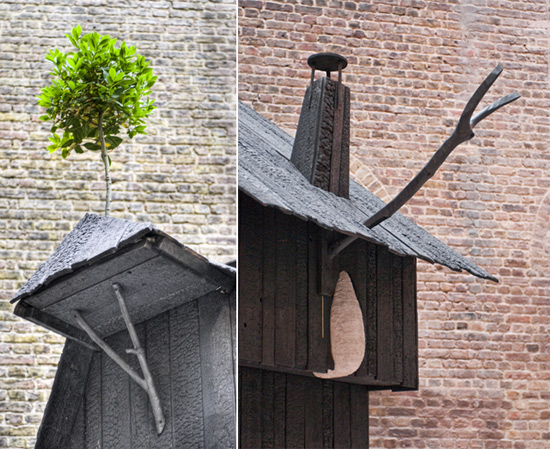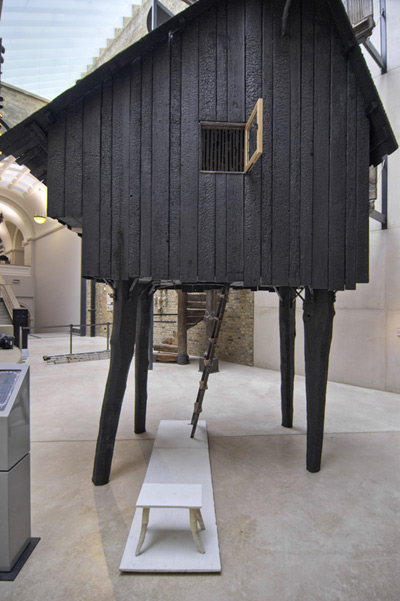terunobu fujimori: beetle's house
Beetle's house is the name for the raised home designed by japanese architect terunobu fujimori which is currently on display as part of ‘1:1 - architects build small spaces’ at the v&a museum in london.
The small dwelling sits in the museum’s medieval & renaissance room, high atop its pillared structure.
The design is clad in rich black charred pine beams that no doubt reference the colour of the beetle.
This type of wood creates a unique texture that preserves the wood and extends the building’s lifespan.
The structure, like fujimori’s other works is intended to by-pass all architectural styles that have developed since the bronze age, returning the act of living to a more primitive state. this home is designed to host an english version of the traditional japanese tea ceremony. its is only accessible through a small hatch in the floor which visitors enter from a ladder.
(Fuente: http://www.designboom.com/architecture/terunobu-fujimori-beetles-house/)
tree tea house
Japanese architect, Terunobu Fujimori, has designed a tree-tea-house called Takasugi-an (tea-house built too high) on a family owned plot in Chino, Nagano (Japan).
Two chestnut trunks without roots support the house, and the only way to reach it is a freestanding ladder that increases the game’s sense. There’s no safety net and you can reach it just if you trust in the architect and if you are brave. In the middle of your climbing to the top, you have to take off your shoes. Inside is padded with plaster and the flat is made of bamboo mats, and the surface corresponds of four and a half tatami (mat used in Japanese architecture as modules).
Terunobu Fujimori Interview_I’m sorry it’s in japanese, but you can see the tree house in all its aspects!
From the only window -that reminds to the traditional kakejiku (a scroll painting or calligraphy mounted usually with silk fabric edges on a flexible backing) a characteristic element of the Japanese tea-houses- people can see the surrounding landscape, its seasonal changes, and Chino transformation.
Inside is very simple and rational typical of the Japanese architecture, the absence of any object is planned, to increase the meditation.
The water for the tea is boiled on a fire, that warms the habitation also in the winter days. Usually they prepare Matcha tea and for sure two of the four fundamental principles of Japanese ceremony are realized: “Wa”, the harmony between people and nature, harmony of tools and the way they are used, and “Jaku” tranquility and peace of your mind, it’s a consequence of the other three principles (Wa, Kei and Sei).
(Fuente: http://hometreehome.wordpress.com/2012/03/30/158/)
Beetle’s House - Terunobu Fujimori, Tokyo, Japan from
Victoria and Albert Museum on
Vimeo.
Terunobu Fujimori, a professor at the Institute of Industrial Science at the University of Tokyo and a historian of modern Japanese architecture, began designing buildings in 1991.
Transcript:
Terunobu Fujimori (sub-titled translation): The recurring theme which I play with in my work is the relationship with the natural world and what human beings have created. I go about this by using natural materials, such as trees and soil in the building of my homes and also by using plants within the buildings.
The focus of my work relates back to architecture before civilisation. How people originally lived, in their natural environment, which is a key subject of my architectural works. I’ve visited Stonehenge many times and other Neolithic sites, walking around and looking at them.
Abraham Thomas: … so this is where the structure will be, pretty much where that bench is. Very close to the Morlaix Staircase.
Terunobu Fujimori (sub-titled translation): I want to create a space that we can enjoy away from our everyday lives, a space with a small fire where people can enjoy tea.
There are seven architects taking part in this project, I know just one of them, the Japanese architect Fujimoto. I know Fujimoto very well. I’m really looking forward to seeing the works by the other five.
http://www.designboom.com/architecture/terunobu-fujimori-beetles-house/
